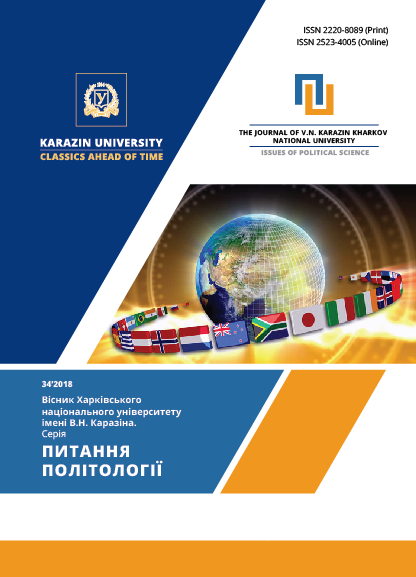PRANKING AS A SPECIFIC FORM OF POLITICAL COMMUNICATION
Abstract
The article presents the phenomenon of pranking as a specific form of political communication. The evolution and the stages of this phenomenon’s development are traced since the end of the 19th century when telephones appeared. The emphasis is placed on the fact that it is the two-stage building of the pranking model that contributes to the entrenchment of pranking in the political culture of society. A certain connection between the pranking development and the achievements of the scientific and technological progress in the field of mass media is revealed. It is shown how, with the advent of the Internet, pranking turns into an important segment of social communications, and prankerism – into nearly a separate profession, how the circle of “victims” of prankerism expands at the expense of well-known politicians and leaders of certain states, which in its turn affects the formation of public opinion on these objects of prankerism.
It is noted that the result of the pranking development consists in complicating and diversifying the circulation of political information between the various elements of the political system, between the political and social systems, between the administered and the administering, and between the politically active and passive segments of the population. By way of illustration, a schematic structure of pranking is provided. It is concluded that it is necessary to focus the attention of political and other scientists on studying this phenomenon and highlighting its positive and negative aspects. The problem of the consequences of pranking, both in terms of the development of political communication, the operating mode of the political system of a country as a whole and of its individual parts, and in terms of the internal and external state security, emerges full blown. The question is raised as to what conclusions political leaders themselves should draw in order not to take the bait of prankers and not to lower the electoral rating among the population of their country.
Downloads
References
Акайомова, А. 2011. “Політична комунікація як процес взаємодії політичних субʼєктівˮ, Політичний менеджмент 1: 87-91.
Лиллекер, Д. 2010. Политическая коммуникация. Ключевые концепты ; пер. с англ. С.И. Остнек. Х.: Изд-во «Гуманитарный центр».
Вован и Лексус. 2018. По ком звонит телефон. СПб.: Питер.
Огаренко, Е.С. 2013. Политические коммуникации: учебно-методическое пособие: Одесск. нац. ун-т имени И.И. Мечникова.
Покровский, А.Н. 2014. “Некоторые аспекты проблемы идентичности в условиях современного коммуникативного пространст-ваˮ, Вісник ХНУ імені В.Н. Каразіна. Серія «Теорія культури і філософія науки». № 1142: 112-118.
Авксентьєва, Т.Г. 2013. Політика і влада в інформаційну епоху: український контекст. моногр. Х.: ХНУ імені В.Н.Каразіна.
Author’s copyright and licensing.
License Terms: Authors retain copyright and also grant the Journal the right to publish original scientific articles that contain research results and are not under consideration for publication in other issues. All material is licensed under a Creative Commons Attribution License International CC-BY, which allows others to distribute their work with the copyright of this work and recognition of the first publication in this Journal.
If the article is taken for publishing in The Journal of V.N. Karazin Kharkiv National University. “Political Science Issues”, the author must sign a copyright transfer agreement. The agreement is sent by post (original document) or by e-mail (scanned copy of the document) to the Editorial Board of the Journal.
By this agreement the author certifies that the submitted material:
- does not violate the copyrights of other people or organizations;
- has not been previously published in other issues and has not been given for publishing to other issues.
The author gives the editorial board the rights to:
- publish the article in Ukrainian (English) and distribute its printed version;
- translate the article into English (for articles in Ukrainian) and distribute the printed version of the translation;
- distribute the electronic version of the article, as well as the electronic version of the English-language translation of the article (for articles in Ukrainian and Russian), through any electronic means (placing on the official journal web site, in electronic databases, repositories, etc.).
The author reserves the right without the consent of the editorial board and the founders to:
- Completely or partly use the materials of the article for educational purposes.
- Completely or partly use the materials of the article for writing own theses.
- Use the materials of the article to prepare abstracts, conference reports, and oral presentations.
- Post electronic copies of the article (including the final electronic version downloaded from the journal's official website) to:
- personal web-resources of all authors (web sites, web pages, blogs, etc.);
- web-resources of institutions where authors work (including electronic institutional repositories);
- non-profit, open-source web resources (such as arXiv.org).




